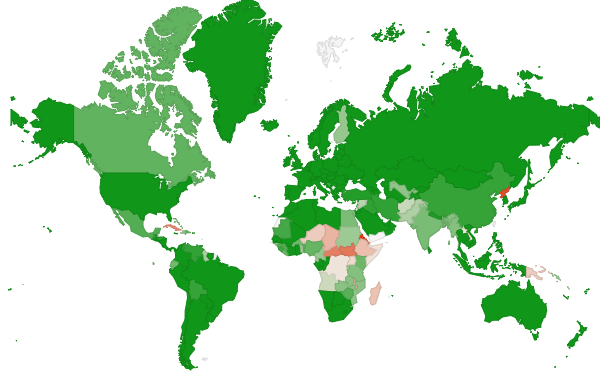At Curious Learning, we’re creating free software so anyone with access to a smartphone can learn to read – opening a gateway for digital education, creativity and employment.
The power of software: fixed cost structure
What makes this model revolutionary is its cost structure: instead of spending hundreds or thousands of dollars per student to pay for teachers, supplies and buildings for traditional formal education, software only needs an investment upfront — and only needs a smartphone, internet and electric power to deliver state-of-the art software to anyone on Earth.
This comparison of hypothetical fixed and variable costs shows the potential power of software-based education, especially if children already have access to a smartphone.
And, if people already have access to phones, the marginal cost drops to nearly zero —spreading fixed costs of creating and improving software over millions of people. But this begs the question, can low-income people – often earning only dollars a day – really afford a smartphone?
Smartphone FAQs
When explaining our vision of creating software in 100 major languages to unlock literacy and learning for anyone with a smartphone, we’re met by two questions: questions about efficacy of software (which we begin to address here), and questions about accessibility. Most often, people ask:
Do people in low-income countries have mobile phones?
Do the poorest people have phones?
Do the poorest people have smartphones?
How many of these people will have smartphones in 10 years?
We do our best to answer these questions by analyzing and extrapolating from the best available data including the 2015 Pew Research Center’s Global Attitude survey of more than 45,000 people in 40 countries, World Bank data on mobile phone adoption from 1990 to 2015, historical mobile phone pricing data using the Wayback machine to track price changes over time, and a range of information on smartphone adoption. While there is uncertainty, both in the data we have today and in how trends will progress tomorrow, we can say confidently that hundreds of millions of low-income people around the world already have smartphone access, and that many more are gaining access every year.
1. In most low-income countries, at least two thirds of people can access mobile phones.
Even in the poorest countries, most households owned at least one smartphone in 2015 — and these numbers are still rising. Even in countries with per capita income below $1,000, two thirds of people typically have access to mobile phones.
This uses unweighted survey data, and will slightly overestimate ownership in low-income countries. But it is also from 2015, so will not reflect adoption over the past 2 years.
Mobile subscriptions per capita in 2015, stopping at 100%. Some adults have multiple subscriptions and some people have subscriptions (i.e. SIM cards) without owning phones.
2. People in extreme poverty have phone access at similar rates to the general population – typically 60-80%.
Even among the lowest earning households, most people can access a phone — it’s only the mix between smart and dumb phones that varies.
Data came from 2015 Pew survey of 40 countries and more than 45,000 people. Low-Income countries earned less than $1,005 per capita in 2016 GNI; Low/Mid-Income countries earned between $1,005 and $3,995 per capita.
3. 100 million people below the global poverty line already have smartphone access
With nearly 750 million people living on less than $1.90 per day PPP in 2013 and 2 billion living on less than $3.10 PPP in 2012, and smartphone access ranging from 5-25%, around 100 million of these people already have access to a smartphone.
Accessibility assumptions are rough estimates based off 2015 Pew survey data.
4. Within 10 years, more than 1 billion people in extreme poverty will have a smartphone.
We’ve seen that most people already have access to a mobile phone. Mobile phone subscriptions continue to grow in low-income countries by around 5% each year, as these countries slowly catch up with higher income countries.
World Bank data on mobile phone adoption shows different growth trajectories of mobile phone subscriptions per 100 people. These growth rates are affected by country income and technology cost over time. We can see lower "ceiling" rates and slower adoption times for lower-income countries.
The same World Bank data show three stages of mobile phone adoption: early adoption, where high cost and limited availability lead to very slow initial adoption; mass adoption, where rates increase significantly each year; and late adoption where rates slow as the market nears saturation. We can see that low-income countries as still adding new users at a high rate (around 5% absolute growth per year).
Even as total subscriptions grow, people are converting from mobile phones to smartphones.
Historical and projected shipments of feature phones and smartphones to Sub-Saharan Africa.
This is driven by decreasing smartphone costs, which drop by 20-30% each year, continuing a trend in decreasing mobile phone costs beginning in the early 2000s.
We retrieved these prices by using the Wayback Machine to examine online stores for prices of phones at different points in time and estimate typical decrease in phone cost over time.
Estimated price curve for Samsung Galaxy S3 based on a 20% annual cost reduction.
Altogether, these trends suggest that within a decade the majority of people will gain access to smartphones, including more than 1 billion people living in poverty.













